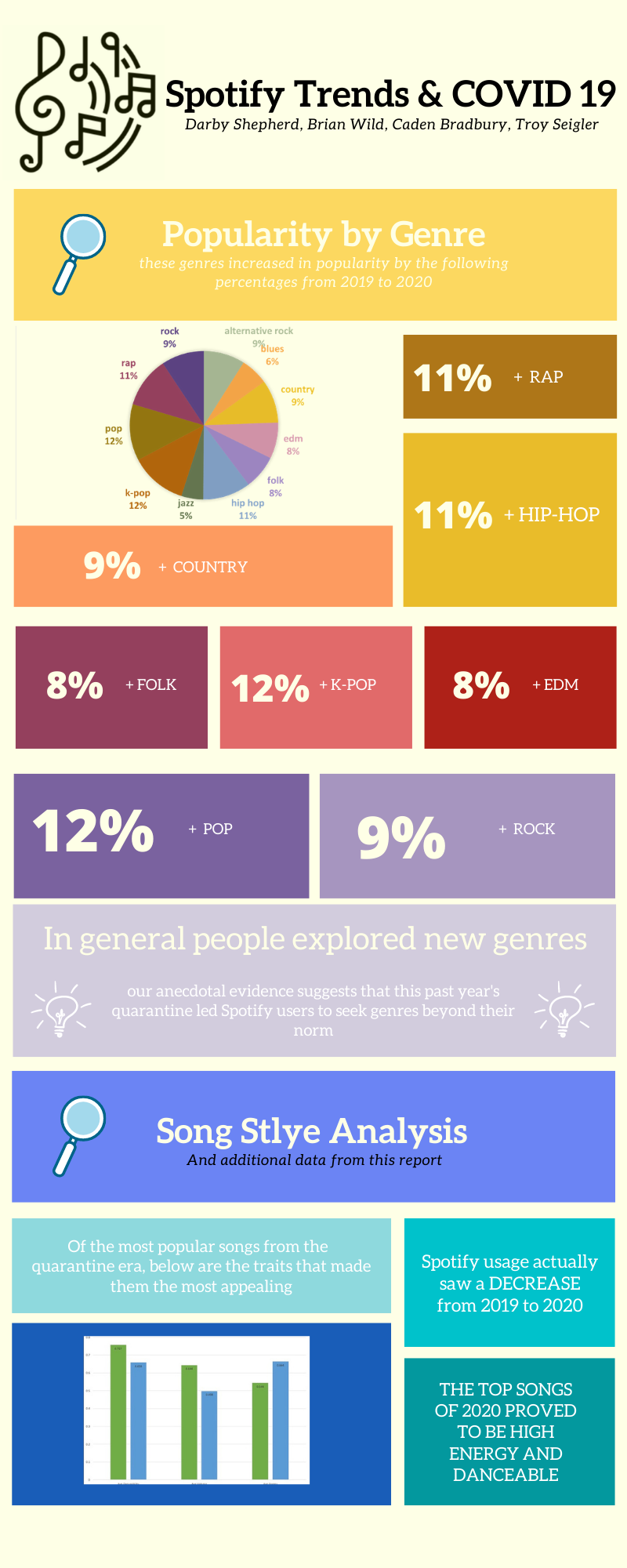
Over the course of 2020 the pandemic forced us all into our homes for extended periods of time. Because of this, we made a prediction that Spotify users would see an increase in music listening on the app. What we found was that the opposite was true. As mentioned in our infographic deliverable, the popularity of Spotify as a music listening app actually went down from 32.3 units in 2019 to 24.1 units in 2020. This was the data we collected, however our research found conflicting results. This fall in popularity of Spotify usage overall can be understood through the lens of studies related to our own. In these studies, new users were indicated to have increased, but existing users indicated that their listening times had diminished due to changes in habits that are typically accompanied by music listening. Other interviews indicated new developments in musical preferences which helps shed light on why genre popularity rose while overall usage decreased.
Another major finding was that virtually all genres saw an increase in popularity. Of the genres we studied, there was an increase of popularity between 2-15%. The anecdotal evidence we collected via interviews suggested this was prompted by quarantine. Users found themselves in new environments and with a sudden influx of free time. This combination encouraged music listening to branch out and explore new genres. Thus, utilizing a combination of our own findings in conjunction with others’ findings, we can infer that the decrease in usage was due to existing users listening less, while the increase in genre popularity can be attributed to new and existing users exploring new genres of music, influenced by their time at home.
Our findings on dancebility, valence, and energy as represented by the blue and green bar graph, showed that the mood of songs in 2020 seemed to go down - fitting. However, overall the top 10 most listened to song were still pretty high in energy and dancebility levels.